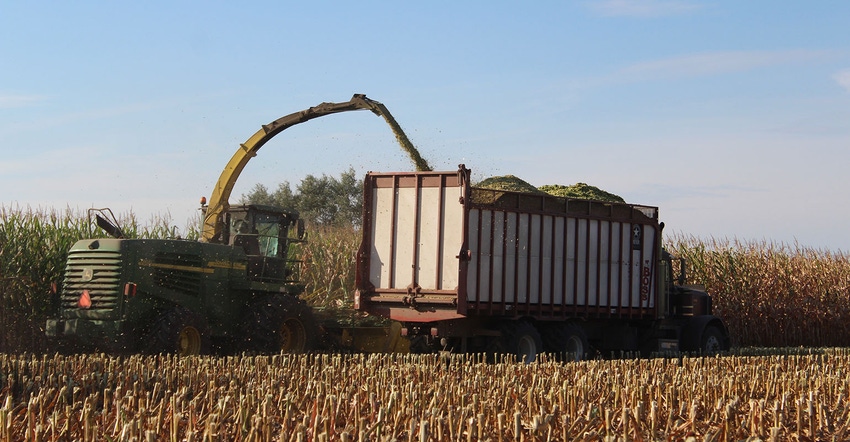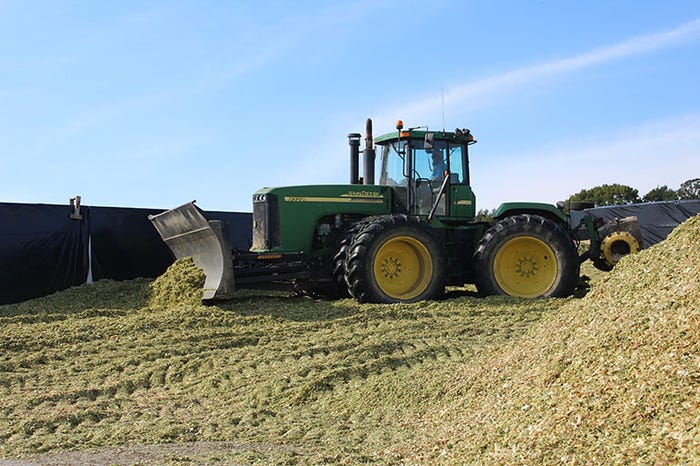August 28, 2019

With forage inventories being low this year, it is more important than ever to manage the aspects of silage harvest that can be managed. The aspects to manage include:
Harvesting at optimum moisture,
Harvesting at proper chop length
Achieving sufficient kernel processing, and
Following recommended storage practices.
“Taking time and putting in the effort to control the controllables, will pay off with high-quality silage,” says Mark Kirk, Business Development and Customer Relations Manager for Rock River Laboratory.
Putting a plan together for best practices before harvest and working that plan to the best of your ability is essential to reach optimal silage quality. “Check to make sure all of the controllables have been addressed before harvest begins, and ensure your team is on the same page to check each of them,” says Kirk. “When the coming year’s feed depends on those few short days of harvest and storage preparation – it pays to do it correctly and make sure those on the team know the importance, too.”
The controllables:
“To me, ideal harvest moisture is the single biggest key in harvest management,” Kirk says. The moisture of the whole plant is indicative of the maturity of the plant. Harvesting corn silage from 68% to 65% moisture will ensure the most important qualities of corn silage are at their best. Silages within this range will have ample, but not too much, moisture for good fermentation. “Silages wetter than 70% moisture often leach out essential nutrients and sugars, lowering the energy content of the silage,” he said, while silages above 70% moisture also generally have decreased starch, which in turn lowers the energy density. On the other hand, “when silage moisture drops below 60% moisture, fiber quality and starch digestibility suffer,” says Kirk. “Packing becomes a problem too with insufficient moisture, causing incomplete or inadequate fermentation.”
The next most important condition of corn silage harvest is kernel processing. The kernel processing score (KPS) is used to measure how thoroughly the corn kernels are processed or broken down. “This score covers the percentage of the starch or kernels that will pass through a 4.75-millimeter screen on a Ro-Tap device,” says Kirk. “A good KPS score is 70% or higher.” Kernel processing increases starch digestibility, which can directly influence milk production and feed efficiency. Kirk recommends checking the KPS on the first day of chopping and at least every other day, or when switching fields in order to maintain a good score and adjust rollers if necessary.
Chop length or Theoretical Length of Cut (TLC) is also another aspect that needs to be managed. TLC is dependent on at least a couple of factors. “The wetter the corn silage, the longer the chop length can be up to three-quarters of an inch,” says Kirk. “But drier corn silage needs to be cut shorter - maybe even down to three-eighths of an inch.” TLC may need to be adjusted if the corn silage has an Undigestible Neutral Detergent Fiber 240 (UNDF240) over 12%.
Once the corn silage is out of the field, proper storage is essential – and one of the most controllable. “Pushing all the air possible out of the silage during storage is imperative to proper fermentation,” he says. “Using a research-proven inoculant is another added protection to preserve the quality of the silage you harvest.” Kirk advises checking the research to back up the associated claims of silage inoculants. “And most importantly, seal the pile or bag as quickly as possible and ensure any holes are mended.”

Source: Rock River Laboratory, which is solely responsible for the information provided and is wholly owned by the source. Informa Business Media and all its subsidiaries are not responsible for any of the content contained in this information asset.
You May Also Like




